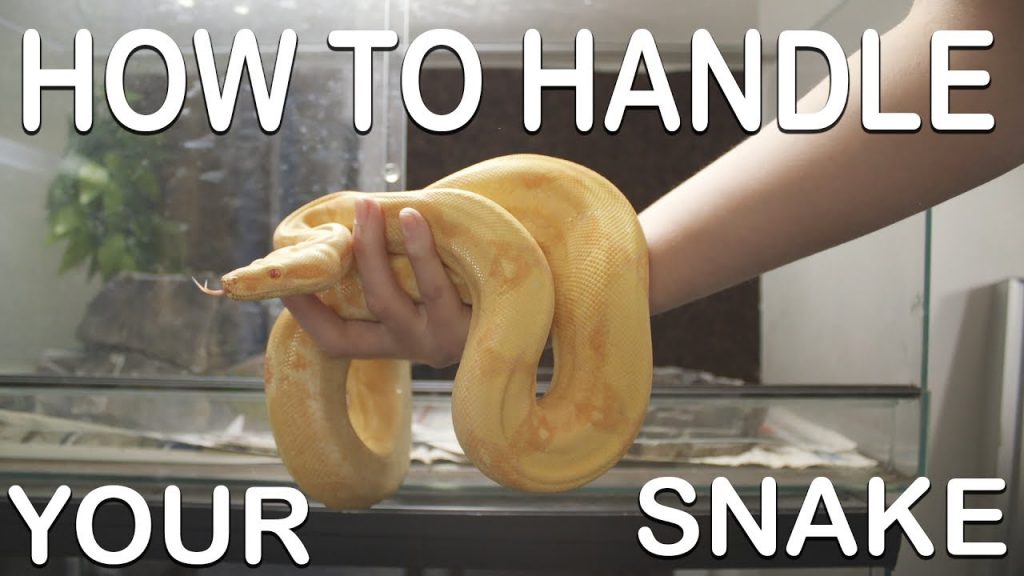How to Deal with Snakes?
Snakes are members of the reptile family and there are more than 2,900 species of snakes in the world.
While some people may be fearful of snakes, they can be fascinating creatures to observe.
There are a few things you should know if you plan on handling a snake though, as they can be dangerous animals. Here are some tips for safe handling of snakes.
How to Handle A Snake Safely?
If you’re confronted by a snake, you’re much likely to get scared. However, there’s a way to handle a snake in your house, garden or workplace.
- Don’t pick up a snake by hands
You should never touch or handle a snake if you don’t know what type it is.
Since some snakes can fatally poison humans while others may only inflict a painful bite, it’s advisable to chase them away.
- Use a long stick or pole
If you want to pick up a snake for the first time, you should observe the features of a venomous snakes (I’ll discuss it later in this article)
Either you want to handle a venomous snake or not, the proper way to pick up a snake is not by hand but using a long stick. There are even poles that with clippers to hold snakes by head and pick them up.
If you do encounter a snake while hiking, use a long stick or pole to gently nudge it away from where you’re hiking.
- How to pick up Snake by hand
It’s easier to pick up a defensive snake than offensive snake. However, if you don’t have a long stick to use, in both cases, make sure your both hands go under the snake’s body.
You should never place your hand over the head of a snake you want to handle as this could lead to being bitten.
Be extremely careful when holding onto large constrictors; these snakes have been known to crush their owners’ fingers by mistake during feeding time.
However, not all constrictors are venomous, some are not really harmful, they only have a strong method of subduing their preys.
Never leave yourself vulnerable should an emergency situation occurs with venomous snakes – always seek qualified medical help immediately.
How to Know if a snake is Poisonous or Not?
There is no one-size-fits-all answer to this question, as the venom of snakes can vary depending on their species.
However, there are some general rules that can help you determine whether a snake is poisonous or not.
First and foremost, it’s important to remember that not all snakes are poisonous!
In North America, for example, only around 15% of all snake species are venomous.
So if you come across a snake while out hiking or camping, the odds are good that it is nonvenomous.
That said, there are some key features that can help you differentiate between venomous and nonvenomous snakes:
- Head shape
Venomous snakes typically have narrower heads than nonvenomous snakes.
- Eyes
Venomous snakes tend to have slitted eyes, while most nonvenomous snakes have round pupils.
- Fangs
Venomous snakes possess long fangs which project from the front of their mouths. Non-venomous snakes lack these distinctive fangs.
If you’re unsure about whether a particular snake is poisonous or not, it’s always best to be cautious handling the snake and avoid contact with it.
What to do if you encounter a snake?
The best thing to do if you encounter a snake anywhere, be in office, home, or garden is to stay calm and stay back.
Many people panic when they see a snake, but this can lead to further injury if the snake feels threatened.
If you are bitten by a snake, try to remember what kind of snake it was, so that you can seek medical attention as quickly as possible.
How to Feed Pet snakes and what types of food are best?
The answer to this question depends on the type of snake you have as well as its age and size.
Juvenile snakes, for example, will need to be fed more often than adult snakes.
For most types of snakes, feed them once a week or every other week.
Some exceptions include lab mice which can be fed every day and large constrictors like pythons and boas which may only need to be fed once a month.
As for what foods are best, that also varies depending on the snake’s diet in the natural envionment.
For carnivorous snakes, chunks of raw meat such as beef heart or chicken work well.
Rodents (such as lab mice) make up the perfect food source for most non-carnivorous snakes while some herbivorous snakes eat items like cooked squash or boiled eggs.”








